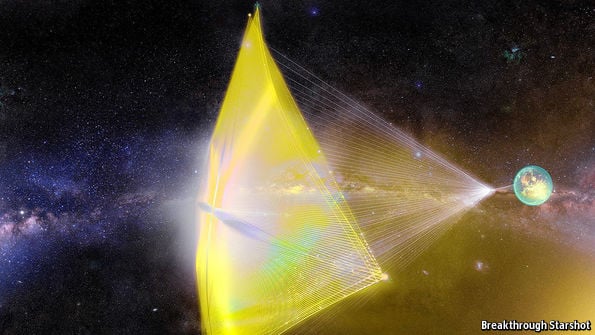Hi everybody,
I read that laser propulsion could, in future, propel spaceships without carrying enormous mass of fuel. And some beams of X-rays coming from space match such a propulsion of a theoretical extraterrestrial civilization (but natural explanations are possible).
Now, as fair as I understand, in layman terms. The theory is that a spaceship traveling between planets A and B carries little fuel itself. A powerful X-ray laser on the planet A accelerates it. Later, a similar X-ray laser on the planet B brakes it. Otherwise 99% of the spaceship mass should be fuel, spent to propel the mass of fuel itself. The arrangement however, requires that the destination B already contains an X-ray laser. So no good for initial space exploration.
My question is: can a theoretical spaceship use external laser propulsion to change direction and possibly brake? The idea would be similar to a normal ship sailing against the wind by tacking. Can this idea advance laser-propelled space exploration? Does it have any effect on interpreting the strange X-ray bursts recorded from space?
best,
Jurek D., Switzerland

 www.economist.com
www.economist.com
I read that laser propulsion could, in future, propel spaceships without carrying enormous mass of fuel. And some beams of X-rays coming from space match such a propulsion of a theoretical extraterrestrial civilization (but natural explanations are possible).
Now, as fair as I understand, in layman terms. The theory is that a spaceship traveling between planets A and B carries little fuel itself. A powerful X-ray laser on the planet A accelerates it. Later, a similar X-ray laser on the planet B brakes it. Otherwise 99% of the spaceship mass should be fuel, spent to propel the mass of fuel itself. The arrangement however, requires that the destination B already contains an X-ray laser. So no good for initial space exploration.
My question is: can a theoretical spaceship use external laser propulsion to change direction and possibly brake? The idea would be similar to a normal ship sailing against the wind by tacking. Can this idea advance laser-propelled space exploration? Does it have any effect on interpreting the strange X-ray bursts recorded from space?
best,
Jurek D., Switzerland

Strange signals from the sky may be signs of aliens
Or maybe something equally weird, but not alive


